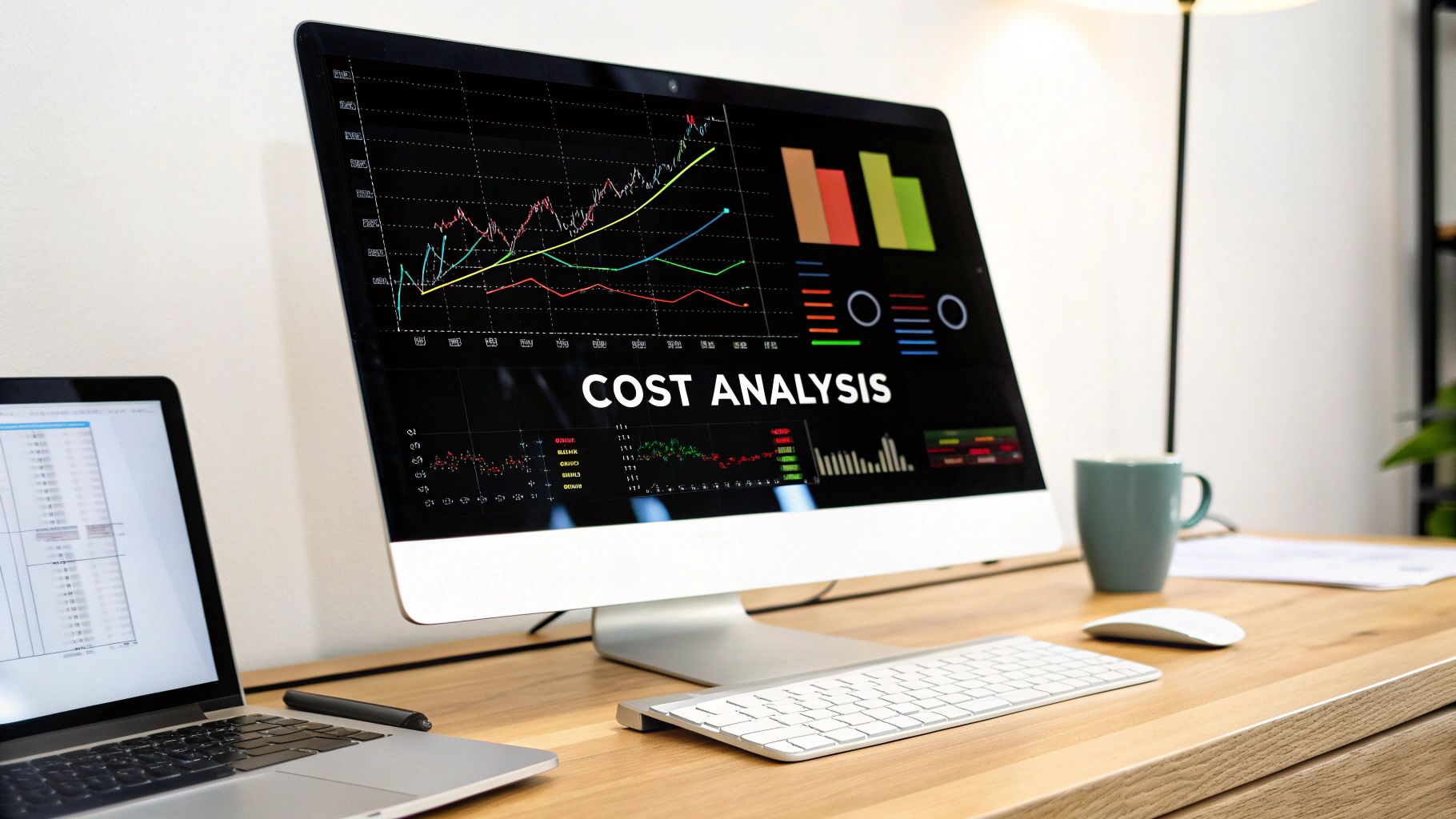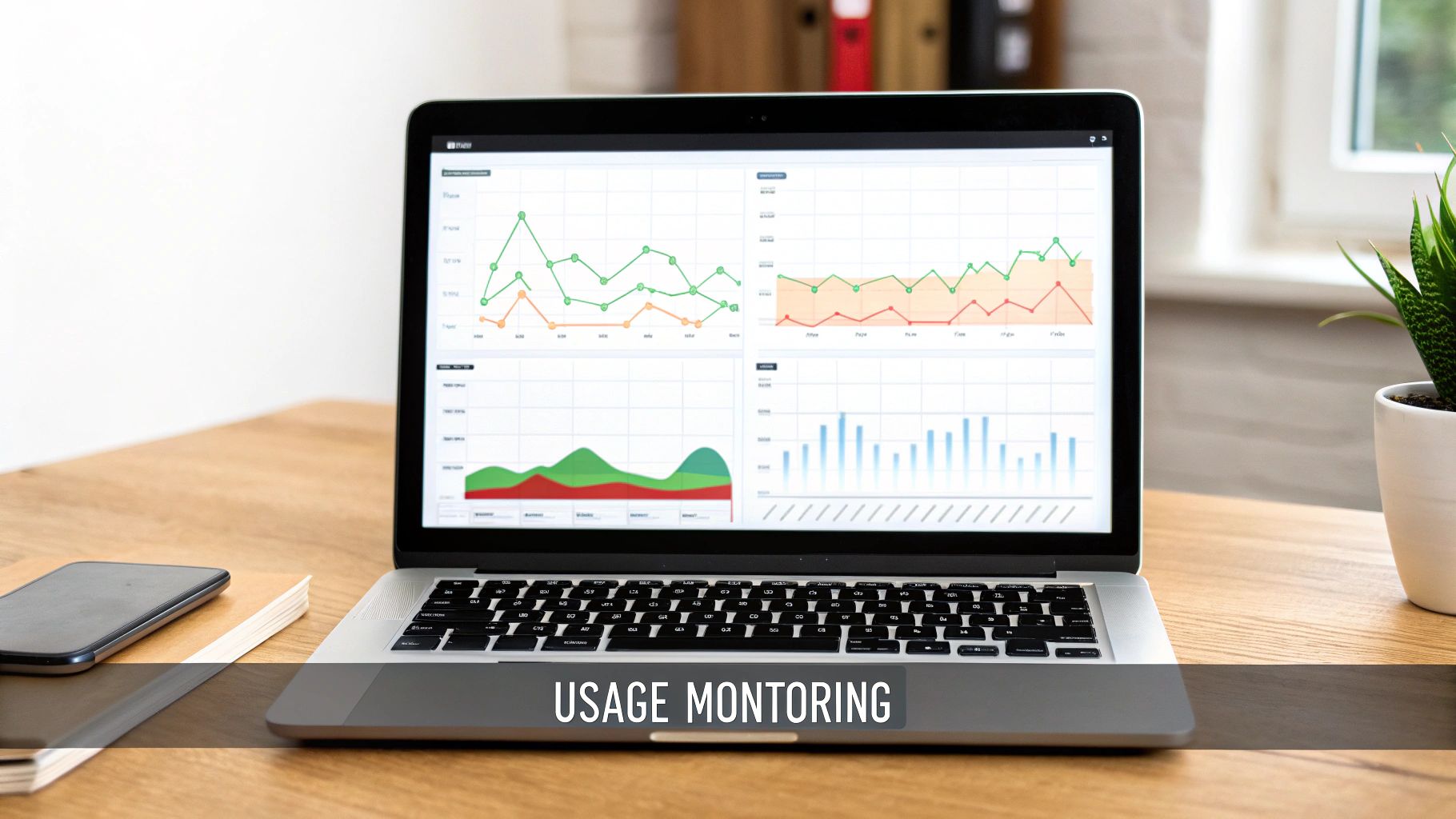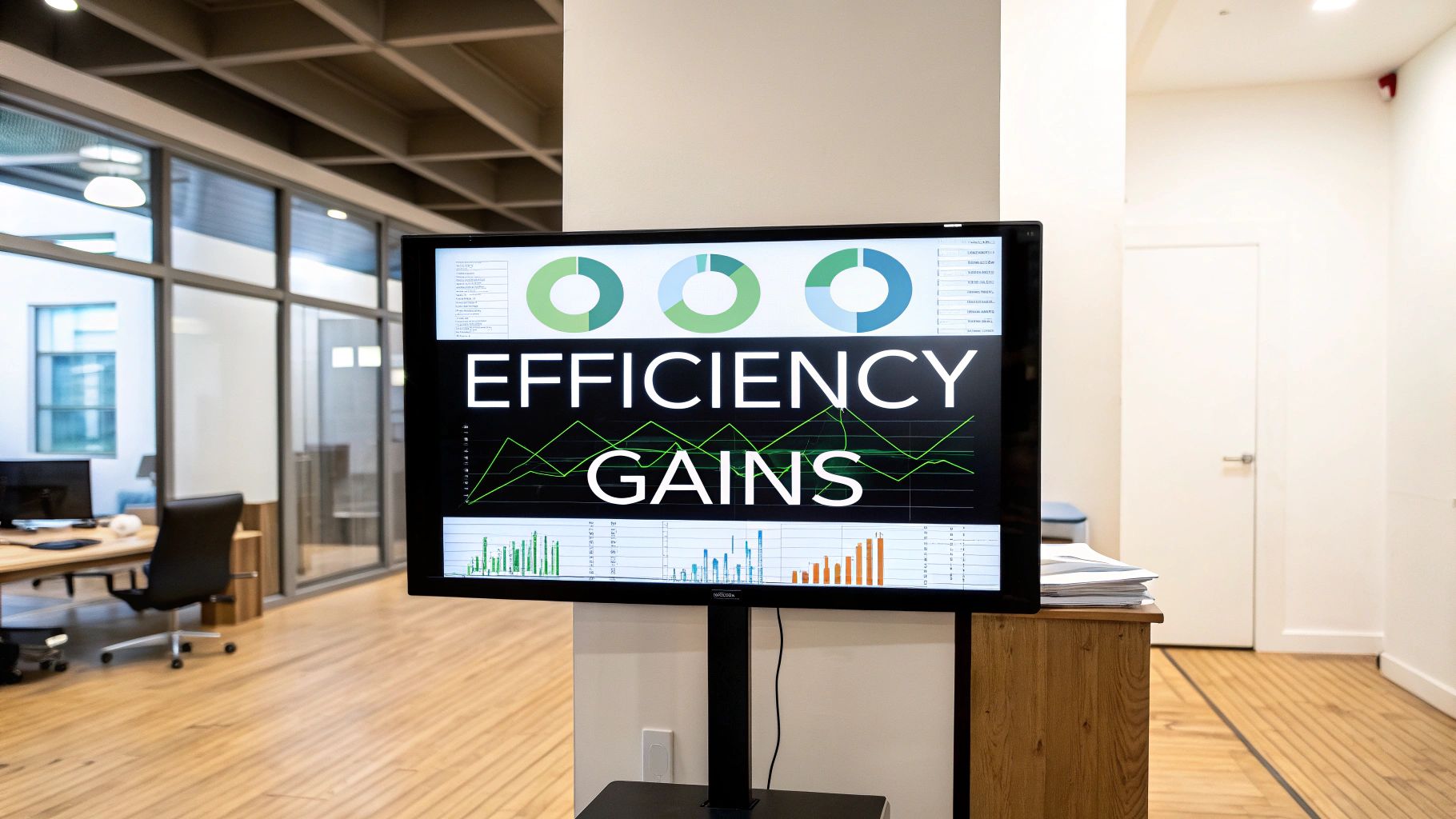
saas cost optimization: Unlock ROI
Share
The Hidden Cost Crisis in Your SaaS Ecosystem

The rapid growth of Software-as-a-Service (SaaS) has created a tangled web of applications and subscriptions for many organizations. While SaaS offers flexibility and scalability, it can also lead to a significant financial drain: the hidden cost crisis. Many organizations are seeing lower returns on their SaaS investments without understanding the root causes. Essentially, uncontrolled SaaS spending is eating into potential profits.
One of the main drivers of this crisis is the lack of visibility into actual SaaS usage. Duplicate applications with overlapping functions become the norm. Imagine multiple teams subscribing to different project management tools – this leads to redundant spending and disjointed workflows. Forgotten auto-renewals for underutilized or unused software also quietly drain budgets, reducing overall return on investment.
This problem is exacerbated by "zombie licenses," which remain active even after employees leave. These overlooked costs add up, representing a significant, yet preventable, expense. Traditional procurement methods struggle to keep up with the fast-paced subscription model, further contributing to escalating SaaS spending. For more on SaaS and related business insights, check out the inblog.ai blog.
The Escalating Costs of SaaS
The rising cost of SaaS is a major concern. According to Cledara's analysis of over 1,000 companies and 250,000 software transactions, businesses are spending an average of 17.9% more on SaaS than they did a year ago. This sharp increase highlights the need for SaaS cost optimization. Roughly half of the CXOs surveyed expressed interest in optimizing SaaS licenses to better align with actual usage, emphasizing the urgency of this issue. You can find more detailed statistics here. Also, you might find this helpful: How to master...
These unchecked SaaS ecosystems not only waste money but also create security risks. Unmanaged access to sensitive data through unused licenses can expose companies to data breaches and compliance issues. This underscores the critical importance of SaaS cost optimization, which not only improves financial health but also strengthens security. This, in turn, allows for better resource allocation and improved overall efficiency.
Crafting Your SaaS Cost Optimization Blueprint
Moving from reactive cost-cutting to a strategic SaaS cost optimization approach requires a fundamental shift in thinking. It's about creating a sustainable plan that balances immediate savings with building long-term value. This involves understanding your current SaaS usage, establishing clear governance, and implementing accountability.
SaaS Discovery and Visibility
The first step is gaining complete visibility into your existing SaaS ecosystem. This means identifying all active subscriptions, understanding how they're being used, and uncovering hidden or unnecessary applications. This process, known as SaaS discovery, is often more complex than it appears. Individual departments can purchase applications independently, making it difficult to get a complete picture.
For example, multiple marketing teams might subscribe to different social media management tools without central oversight, leading to redundant spending. This discovery phase should also analyze current contracts, renewal dates, and license utilization.

Cross-Functional Governance and Accountability
After understanding your SaaS landscape, establish a cross-functional governance structure. This involves creating a committee with members from IT, finance, and other key departments. This team oversees SaaS spending, approves new purchases, and enforces optimization strategies.
Accountability is essential for lasting success. For example, implement a chargeback model where departments are responsible for the costs of their SaaS subscriptions. This encourages thoughtful spending and reduces waste. Regularly review SaaS usage data and hold departments accountable for optimization goals. A well-managed marketing budget is also critical. For further information on finding cost-effective strategies that deliver results, explore this helpful resource.
Prioritization and Decision-Making Framework
A core part of any SaaS cost optimization blueprint is a solid decision-making framework. This framework helps prioritize optimization efforts based on several factors:
- Business Impact: How important is the application to essential business operations?
- Implementation Complexity: How challenging will it be to optimize usage or migrate to a new solution?
- Potential Savings: What are the realistic cost reductions achievable?
This framework ensures your strategy delivers both quick wins, such as reclaiming unused licenses, and long-term gains, like negotiating better contracts for critical applications. Think of it like prioritizing medical care – addressing the most critical issues first while still managing other important needs.
To illustrate the key components of a strong SaaS cost optimization strategy, the table below provides further details.
The following table outlines the crucial elements that should be a part of any comprehensive SaaS cost optimization plan, encompassing everything from careful inventory management to proactive renewal planning.
Essential Components of a SaaS Cost Optimization Strategy
| Strategy Component | Description | Implementation Difficulty | Typical ROI Timeline |
|---|---|---|---|
| SaaS Inventory Management | Comprehensive tracking of all SaaS subscriptions, including usage, renewals, and costs. | Low | Immediate - 3 Months |
| Usage Optimization | Identifying and eliminating redundant licenses, optimizing user access, and promoting efficient application usage. | Medium | 1 - 6 Months |
| Renewal Negotiation | Strategically planning and negotiating SaaS renewals to secure favorable terms and discounts. | Medium | 6 - 12 Months |
| Vendor Consolidation | Evaluating and consolidating SaaS vendors to leverage volume discounts and simplify management. | High | 12+ Months |
| Automation | Implementing tools and processes to automate SaaS management tasks, such as license provisioning and usage monitoring. | Medium | 3 - 9 Months |
As this table demonstrates, the potential return on investment (ROI) can vary significantly depending on the specific strategy implemented. Simpler strategies like SaaS inventory management can yield immediate returns, while more complex initiatives such as vendor consolidation may require a longer timeframe to realize significant cost savings.
Continuous Optimization and Monitoring
SaaS cost optimization isn't a one-time project; it’s a continuous effort. Implement ongoing monitoring and regular reviews to find new optimization opportunities. This includes tracking usage patterns, reviewing contract renewals, and staying up-to-date on market trends.
This ensures your SaaS spending aligns with your business objectives and delivers maximum value. It also requires a shift in organizational culture, where optimization becomes an ingrained practice rather than a reactive measure.
Mastering Cloud Costs: The SaaS Provider Perspective
For SaaS providers, managing cloud infrastructure costs is paramount. These expenses directly impact profit margins and influence pricing competitiveness. By studying high-performing SaaS companies, we can learn how they optimize cloud spending while maintaining top-notch performance. This isn't about slashing costs; it's about strategically investing in efficiency.
Right-Sizing Resources and Auto-Scaling
One key area of focus is right-sizing resources. This means matching provisioned resources to actual demand. Overprovisioning, while seemingly safe, leads to wasted spending on unused capacity. Underprovisioning, however, can negatively impact the customer experience. Finding the right balance is crucial.
Leading SaaS providers implement intelligent auto-scaling, allowing their infrastructure to dynamically adjust to demand fluctuations. During peak hours, the system automatically provisions more resources. During off-peak times, resources are scaled back, minimizing costs. This dynamic approach ensures both performance and cost-effectiveness.
Database and Storage Optimization
Optimizing database performance and storage costs is crucial. Inefficient queries or excessive storage can significantly impact the bottom line. Strategies like database query optimization, data archiving, and leveraging cost-effective storage tiers are essential.
Think of it like organizing a warehouse. Frequently accessed items are placed in easily accessible locations, while less frequently used items are stored further away. This tiered approach minimizes retrieval costs. Storage tiering in the cloud works similarly, allowing SaaS providers to move less frequently accessed data to cheaper storage options.
Building a Cost-Aware Culture
A crucial aspect of SaaS cost optimization is building a cost-aware culture within development teams. This involves integrating cost considerations into the design process from the outset. Cost-awareness becomes a fundamental principle guiding development decisions, rather than an afterthought.

Optimizing SaaS costs is a strategic approach to managing cloud expenses. Cloud hosting costs typically account for 6% to 12% of a SaaS company's revenue and are a significant part of their cost of goods sold (COGS). Addressing these costs effectively requires understanding factors like deployment architecture, network costs, and the adoption of cost-aware technologies. EY-Parthenon emphasizes the importance of monitoring expenses, adopting cost-effective technologies, and fostering a cost-aware culture.
By implementing these strategies, SaaS providers can reduce costs, improve performance and scalability, and ultimately, sharpen their competitive edge. This comprehensive approach ensures sustained success in the dynamic SaaS market.
The Art and Science of License Optimization

License sprawl often represents the biggest area for immediate SaaS cost optimization. Leading companies don't see license management as a chore, but as a strategic opportunity. This section explores how to transform license management into a source of substantial savings.
Conducting a SaaS Usage Analysis
The first step towards license optimization is understanding software usage. A thorough usage analysis identifies underutilized licenses without impacting productivity. This involves tracking login frequency, feature usage, and data consumption across various SaaS applications.
For example, if a team has 10 licenses for a design tool but only five team members use it regularly, there’s potential for immediate savings. This analysis provides a clear picture of where licenses are being wasted.
Optimizing License Tiers and User Needs
Many organizations default to premium SaaS editions, even when users only need basic features. Tier optimization involves matching license types to actual user needs. This requires analyzing user roles and identifying the necessary features for each role.
For instance, a sales team might only need the basic version of a CRM, while marketing might require the premium edition for its advanced analytics. This granular approach ensures that you only pay for what you use.
Automating License Reclamation and Provisioning
Employee transitions create a breeding ground for wasted licenses. Automating license reclamation ensures licenses are deactivated when employees leave or change roles, preventing accumulating costs from zombie licenses. This proactive measure stops unnecessary spending.
Similarly, role-based provisioning automates license allocation based on job function. This prevents unnecessary access and ensures employees have only the licenses they need. This proactive approach optimizes costs and enhances security by restricting access to sensitive data. You might be interested in: How to master...
Leveraging License Pooling for Maximum Utilization
License pooling maximizes utilization by allowing licenses to be shared across a team or department. This strategy is especially effective for software used intermittently. Imagine a specialized design tool needed only for specific projects.
Instead of individual licenses for each team member, a shared pool allows access as needed, reducing costs significantly. This approach optimizes license usage and reduces the total licenses required.
To help visualize the potential savings, let's look at a comparison of common optimization techniques across different SaaS categories:
License Optimization Opportunities by SaaS Category: This comparison table shows common optimization approaches across different categories of SaaS tools, helping readers identify where to focus their efforts.
| SaaS Category | Common Waste Areas | Optimization Techniques | Typical Savings Potential |
|---|---|---|---|
| Project Management | Unused licenses, Overlapping features | Tier downgrade, License pooling | 15-25% |
| CRM | Inactive users, Feature bloat | Role-based access, Usage monitoring | 10-20% |
| Communication & Collaboration | Redundant subscriptions, Underutilized features | Feature analysis, Tier optimization | 5-15% |
| Design & Creative | Specialized tools used infrequently | License pooling, On-demand licensing | 20-30% |
As the table demonstrates, significant savings can be achieved across various SaaS categories by implementing the right optimization techniques. Focusing on areas like unused licenses, overlapping features, and inactive users can have a significant impact on your bottom line.
Real-World Examples of Effective License Management
Effective license management saves money, improves compliance, and provides valuable insights. For example, one company reduced its SaaS spend by 20% by reclaiming unused licenses and optimizing tiers.
Another organization gained a clearer understanding of its software usage patterns, leading to more informed purchasing decisions. These examples show that optimizing licenses can drive both short-term cost savings and long-term strategic value. It's a crucial part of any comprehensive SaaS cost optimization strategy.
Transformation In Action: SaaS Optimization Success Stories
SaaS cost optimization isn't simply a theoretical concept; it delivers tangible, real-world results. Examining success stories reveals the significant impact strategic SaaS management can have. These case studies showcase the journey from initial challenges to successful implementation and ongoing management across various industries and company sizes.
Healthcare Provider Streamlines SaaS And Improves Adoption
A mid-market healthcare provider faced rising SaaS costs and disappointingly low tool adoption rates. They lacked a centralized system for managing their SaaS applications, resulting in redundancies and underutilization. Through a comprehensive optimization initiative, they implemented a SaaS management platform, rationalized their application portfolio, and introduced role-based access control.
This resulted in reclaiming 32% of their SaaS budget. It also improved tool adoption rates by simplifying access and ensuring users had the appropriate tools for their specific roles. Ultimately, these changes led to better patient care and enhanced operational efficiency.
Global Enterprise Overcomes Resistance To Centralization
A global enterprise struggled with decentralized SaaS procurement. Individual departments maintained control over their applications, creating resistance to a centralized approach. The company successfully overcame this by demonstrating clear benefits to department leaders.
They piloted a SaaS optimization program within a single department, showcasing significant cost savings and improved security. This success paved the way for broader adoption, centralizing SaaS management across the entire organization. This led to improved control, better compliance, and enterprise-wide cost reductions.
Real-World Examples of SaaS Cost Optimization In Action
The previous examples offer a glimpse into the potential of SaaS cost optimization. Many organizations are realizing that effective SaaS management offers substantial financial benefits. Zylo, for instance, provides real-world case studies showcasing this potential.
Adobe achieved $60 million in cost savings and avoidance by rationalizing and standardizing its software, reducing unnecessary spending. ModMed also saved millions by reclaiming unused licenses and canceling unneeded applications, simultaneously improving operational efficiency. These outcomes highlight how strategic SaaS management goes beyond cost savings, leading to operational improvements and smarter resource allocation.
The Power Of Measurable Outcomes
Each success story emphasizes the importance of measurable outcomes. By tracking key metrics like cost savings, license utilization, and user adoption rates, organizations can demonstrate the true impact of their optimization efforts. This data validates the chosen strategy and provides valuable insights for continuous improvement.
These real-world examples act as practical guides for other organizations beginning their SaaS optimization journeys. They demonstrate that effective SaaS management offers benefits beyond cost reductions, including improved efficiency, enhanced security, and better decision-making. This leads to optimized resource allocation and enhanced overall business performance.
Building a Culture of Continuous SaaS Optimization
Sustainable SaaS cost optimization isn't a one-time fix; it needs to be woven into the everyday operations of your organization. This means shifting from reactive cost-cutting to a proactive, continuous improvement approach. Let's explore how successful organizations consistently optimize their SaaS spending.
Establishing Effective Governance Committees
A key factor is setting up a dedicated SaaS governance committee. This cross-functional team, composed of IT, finance, and other relevant stakeholders, balances the need for innovation with responsible spending. They oversee all SaaS expenditures, approve new purchases, and ensure optimization strategies are implemented effectively.
This committee acts as a central authority, making sure all SaaS acquisitions align with the overall business strategy and budget. This helps avoid the problem of "shadow IT" and ensures a consistent approach to SaaS management.
Implementing Renewal Management Calendars
Unexpected auto-renewals often lead to unnecessary SaaS spending. Successful organizations use renewal management calendars to proactively manage upcoming renewals. This gives them clear visibility into renewal dates and provides leverage during vendor negotiations.
For example, knowing a contract is up for renewal in three months gives you ample time to assess current usage, explore alternative solutions, or negotiate better terms with the existing vendor. This proactive approach prevents overspending and maximizes value.
Effective Usage Monitoring Without Administrative Burden
Monitoring SaaS usage is vital for identifying optimization opportunities. But, excessive monitoring can create an administrative headache. The best approach focuses on key usage metrics without overwhelming your team.
This might involve tracking things like login frequency, feature usage, and data consumption. This data can reveal underutilized licenses, opportunities to right-size subscriptions, and even redundant applications. Check out our guide on How to master... for more information.
Driving Accountability and Maintaining Momentum
A culture of accountability is crucial for long-term SaaS cost optimization. Leading organizations use various methods to achieve this, including chargeback models. This is where departments are directly responsible for their own SaaS costs. This encourages responsible spending and reduces waste.
Executive dashboards provide high-level visibility into SaaS spending across the organization, allowing leadership to track progress and identify areas for improvement. Celebrating cost-saving successes reinforces positive behavior and keeps the momentum going.
Aligning SaaS Spending with Business Value
The ultimate goal of continuous SaaS optimization is to ensure that your SaaS investments align with your business objectives. By adopting the strategies outlined above, you can create a culture where SaaS optimization is an ongoing priority, not a one-time project. This maximizes your return on investment and supports sustainable growth.
By implementing these practices, you can transition from reactive cost-cutting to a proactive, continuous improvement model. This ensures that your SaaS spending delivers maximum value and supports your long-term business goals.
Ready to take control of your SaaS spending? AccountShare offers a platform for accessing premium services and subscriptions at a reduced cost through the power of group purchasing. Learn more about how AccountShare can help you optimize your SaaS costs.
